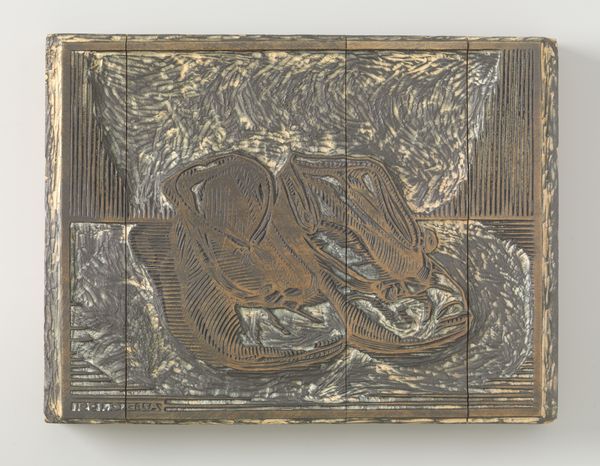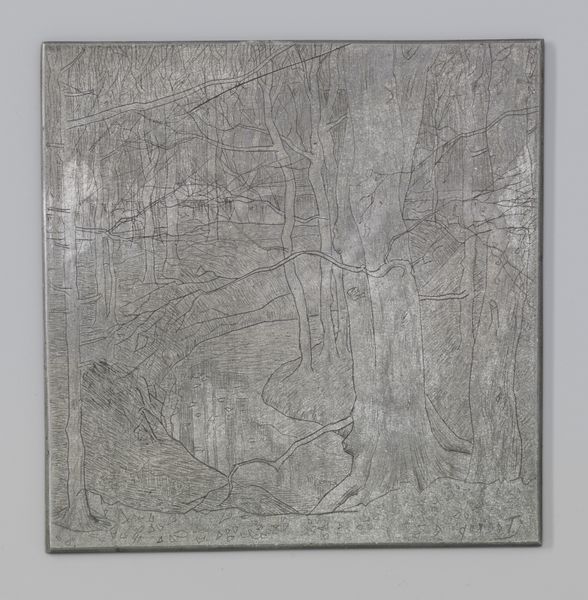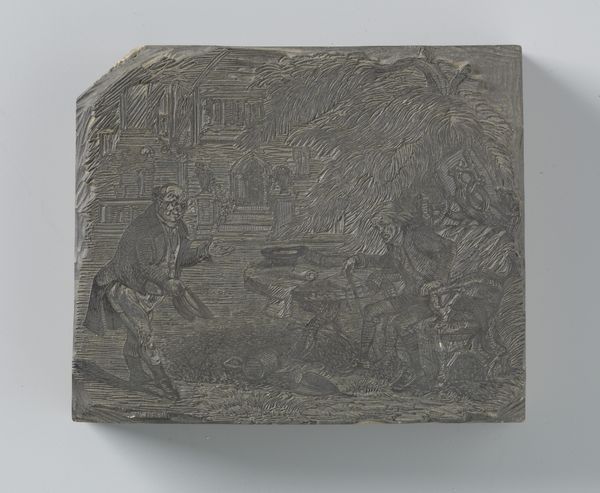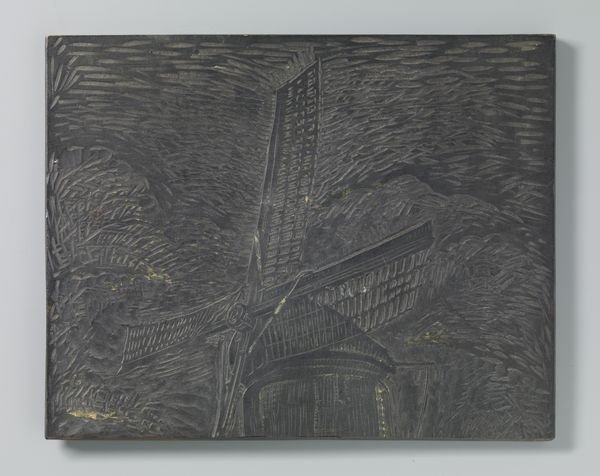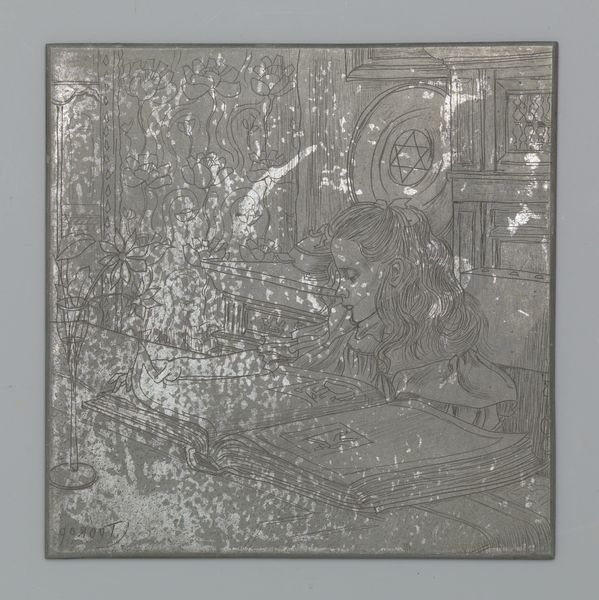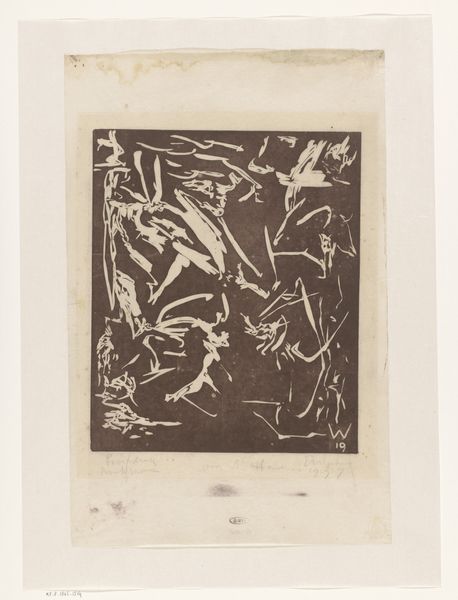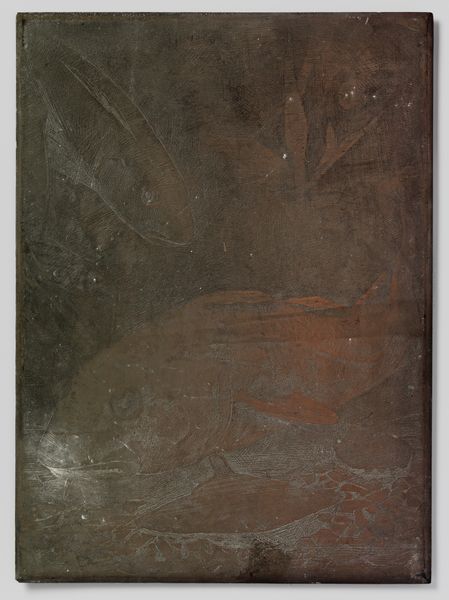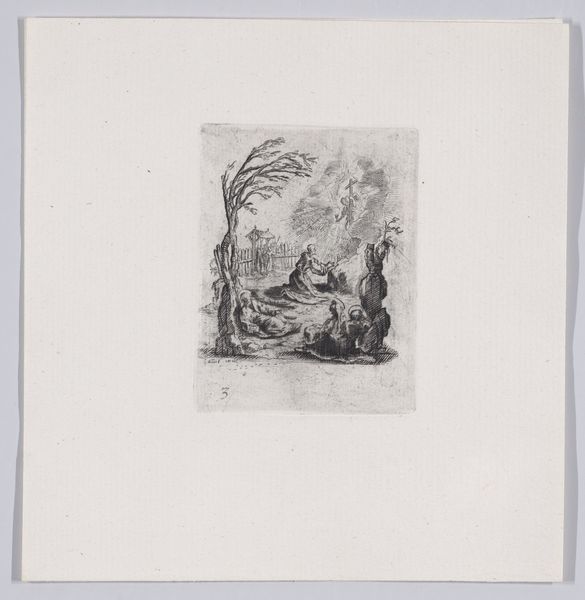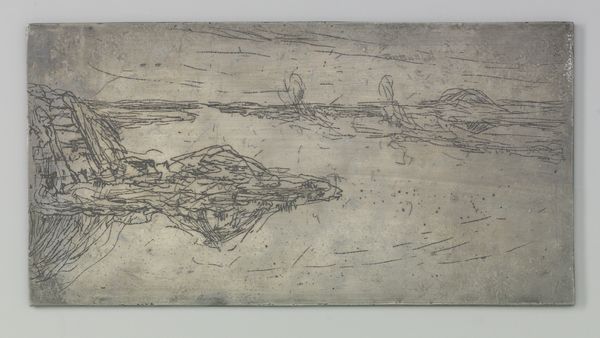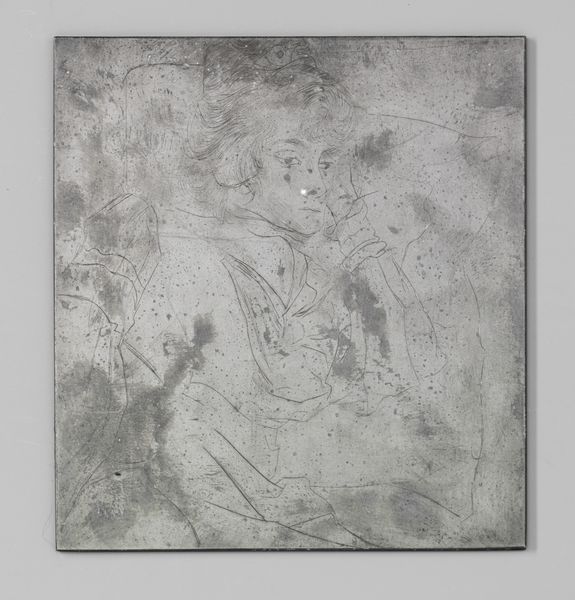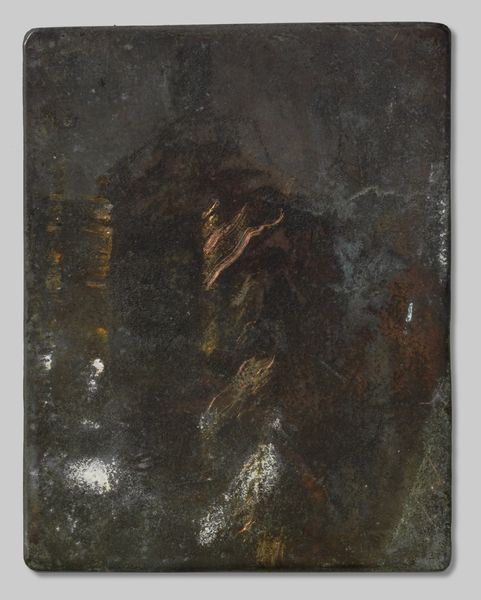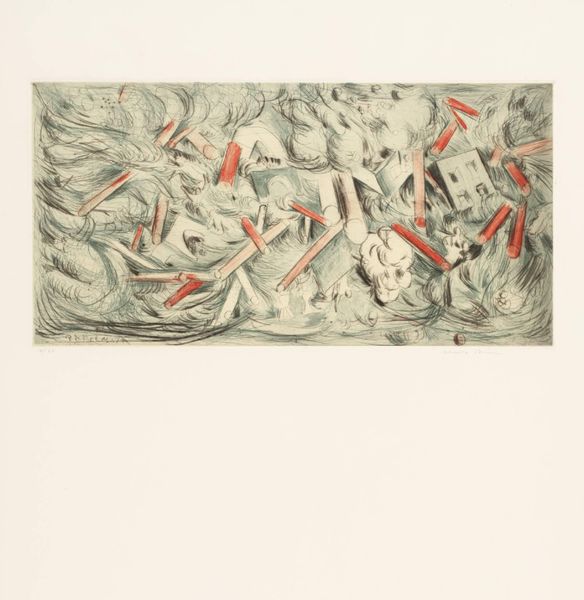
#
natural stone pattern
#
toned paper
#
detailed texture
#
paper texture
#
carved into stone
#
wooden texture
#
watercolour bleed
#
watercolour illustration
#
mixed medium
#
watercolor
Dimensions: height 86 mm, width 89 mm
Copyright: Rijks Museum: Open Domain
Editor: We’re looking at Julie de Graag's "Two Lobsters," made sometime between 1887 and 1924. It's currently held at the Rijksmuseum. The piece feels quite graphic, almost like an illustration from a children’s book. What strikes you about this work? Curator: Immediately, I am drawn to the symbolic weight these lobsters carry. Lobsters, often associated with the sea and primordial life, can represent both abundance and vulnerability. Note their armored bodies rendered with such detail; yet they exist in an environment of clovers, symbols of luck, perhaps hinting at a precarious existence, their fate hanging in the balance. What do you make of the clovers themselves? Editor: That's a compelling idea. I hadn’t thought about them in opposition like that, luck versus survival. They are meticulously drawn, but something about their sameness also makes me think of artificiality. Curator: Exactly! Consider the tension between the natural world presented—lobsters in their habitat—and the almost decorative stylization. De Graag, through her choice of subject and rendering, creates a dialogue about nature and artifice, wildness and cultivation. The monochromatic palette further intensifies this tension, focusing our attention on the symbolic interplay. The image feels dreamlike, doesn’t it? Editor: It does. So, the lobsters and clovers aren't just images of those things. They're loaded with broader cultural meaning. Curator: Precisely. De Graag invites us to decode this symbolic language. These weren't just sea creatures. She infuses the scene with a narrative reaching deep into cultural memory, prompting us to reflect on humanity’s complex relationship with nature. Editor: I see it now! It's a lot more complex than I initially thought. Thanks, that gives me a lot to think about. Curator: My pleasure. The beauty of art lies in its capacity for continuous revelation.
Comments
No comments
Be the first to comment and join the conversation on the ultimate creative platform.
